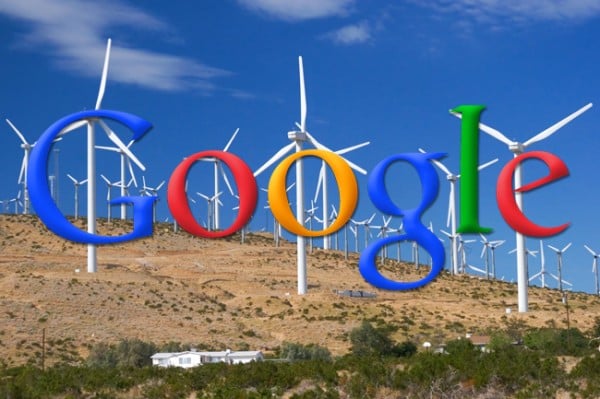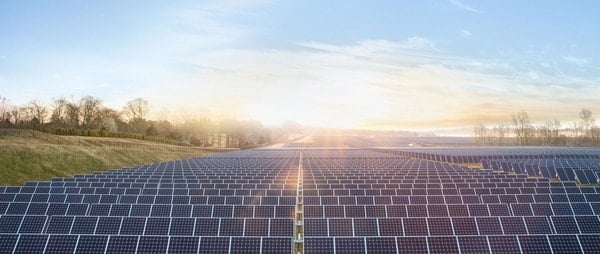
The Woes of Being a Millennial in Business
September 14, 2015
This Week in Getting Hacked: Fembot Edition
September 16, 2015There’s always a ton of talk about data centers around the world. Every tech-news website one visits is ripe with this data center doing that and that other data center doing this. You may skim those articles or ignore them, but what you can’t ignore is the power of a data center—and what it costs to power them.
One might think with such big companies such as Amazon, Apple, Google, and Facebook hosting such massive data centers that the energy costs would be through the roof. And at one point in time that was the case. Present day, however surprisingly, data centers only are responsible for a few percentage points of the energy footprint of the United States.
The connotation that data centers equal tons of energy costs perhaps only comes from the clout of those big companies mentioned above. That’s not to say that at one point in time data centers were not wildly inefficient. In fact, it’s been a worldwide initiative—mainly spurned by those large companies to clean up data centers for years now and the evolution of such enterprises is finally coming to an efficient, frothy if not neatly-cabled, head.
Go ahead, check out Google’s video on Data Center Efficiency if you don’t believe me:
How Data Center Efficiency Has Evolved
>The single most important data center innovation is the ever-talked-about Data Center Infrastructure Management (DCIM). This allowed data center companies to monitor the physical infrastructure of the center and alert them of any problems it may be having.
To go along with that, DCIM also allows the companies to keep track of the amount of resources its utilizing.
DCIM, in a simplified world, comes in three layers:
- The Infrastructure Layer — Power, cooling, and the physical space
- The IT Infrastructure Layer — Storage, Communication Equipment, and Computing
- The gap between the two previous layers — to allow data center operators to have visibility into the true capacity of both layers
With DCIM, data center operators have been able to take the information gleaned and transform their data centers into a more efficient and sustainable structure. If you would like to read more about DCIM, check out Emerson Network’s wonderfully informative white paper (link removed) about the matter.
The next step was for data center companies to make their data centers efficient while still cost effective. In short, data centers had to grow up and understand finance.
Given enough time, data centers probably could have figured this out on their own, but they still needed to find that sweet spot between alternative/innovative ways to power their data centers (which sometimes can get costly) and not taking out the rise in cost on their customers.
Enter the economic tranquility of the IT infrastructure layer. Data centers needed to find more efficient servers (or more efficient ways to host those servers despite some security flaws—looking at you, cloud).
Take this analogy from Romonet’s Zahl Limbuwala, “If I have two equal size rooms, I can rent them for the same price to two different companies. But if one fills the room with ten people 24-by-seven, while the other has one person in it for one hour per month, the revenue is identical, but the cost and margin is different.” Yes, the latter half was how data centers typically operated before they all realized something had to be done before energy costs started to become a nightmare—both cost-wise and for media attention (the bad kind).
What Big Data Centers Have Done to Improve Data Center Efficiency
As mentioned above, the big players in the data center business are companies like Amazon, Apple, Google, etc. They are always looking for ways to improve the efficiency of their data centers—and they have the monetary resources to do so.
Google, for instance, has just bought wind to provide power to their local headquarters in Silicon Valley—this coming after Google basically doing everything to ensure their data centers were running at tip-top efficiency.

Apple is using California as one giant solar-energy field (you know, the parts of California that’s just nothing).

In the past few years, these companies have jumped aboard the data center efficiency bandwagon and, along with the power and internet companies themselves, have brought a revolution to the efficiency revolution.
Let’s take a gander at North Carolina. Google, Facebook, and Apple all have enormous data centers there to fuel their east coast business. Apple built another giant solar farm there around 2013. Which wasn’t really a priority. Remember, this data center efficiency evolution has happened gradually over time—and is especially prevalent in the past few years. When these companies were first blossoming onto the scene, power costs were not at the forefront of their minds.
Google, for instance, had no plans for for clean power when they drew up plans for their North Carolina data center back in 2007. Since then, however, Google has invested close to one billion dollars into clean power.
When Apple and Facebook wanted to build data centers in North Carolina a few years later in 2009, they wanted to implement clean power but the power companies in the area didn’t offer it. So, Apple decided to take matters into their own hands, building massive solar farms which counterbalanced the dirty power that was being supplied from the area’s power companies.
This has forced utility companies and state regulators to adjust to the internet and data center companies’ demands for cleaner energy.
Cleaner Energy Means Better Data
And now is a better time than most with wind and solar energy being as cheap as its ever been. Internet and data center companies are looking to take advantage of these prices to make existing data centers more efficient and an future data center endeavors to be as efficient as ever.
Perhaps in a few years those few percentage points of power the data center companies’ consume nationwide, will fall to fractions of a percentage point.
